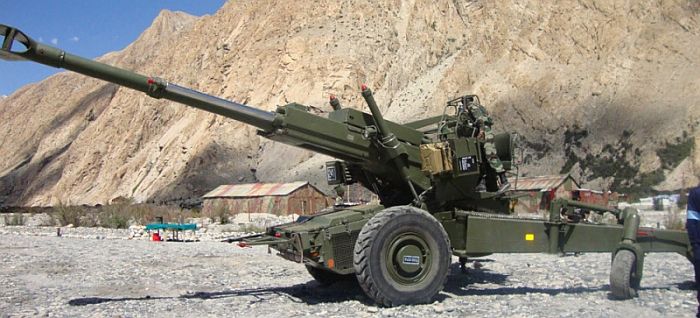I read the whole argument about why we even need "so many" arty guns and instead using aerial modes of delivery... and I find it quite interesting. I know this is a point that has been made before, and by far more expert posters than me, but I'll chip in with my two cents anyway.
One standard principle of battle strategy, one that has stood the test of time, is this - at the critical point in battle, find the point where the enemy is weakest, and attack that point with overwhelming force, in the quickest possible time, before the enemy can react. Speed, accuracy and superior firepower are vital. Once you break through that weak point, the enemy finds it hard to react and regroup effectively, and the battle is pretty much over. That shock value can end the battle. Khalid al Khalid demonstrated this often during his battles, even in the face of larger armies. The Pak Army missed such a chance in 1965 (by just one day) and we used their delay to prepare the ground at Asal Uttar. The same with the initial German assaults in WW2 as well as the Normandy landings.
In ancient battles, this 'shock' value used to be provided by cavalry, or within a particular, battles, by a good partnership between cavalry and archers (Agincourt). Later, once cannons became common, this became cavalry and cannons. However, cannons were still low range, so they werent versatile. By WW1, we had the first tanks and howitzers, but thanks to the trench warfare nature of that conflict, artillery were relegated largely to being weapons of annoyance. The true power of artillery became obvious with WW2, by which time the use of indirect-fire, long-ranged artillery was well developed, and the doctrine of combined arms operations meant that they worked in concert with armor and infantry.
Why am I going on this detour? To make the point that given their long range, and cheap cost, artillery is the BEST way to achieve overwhelming firepower and bring it to bear into a battlefield really quickly. Gone are the days when cannons worked only at visible ranges and weren't too accurate. Artillery is now extremely versatile.
In a theatre, we might either have a number of small unit (platoon or company) engagements over a large spread out area, where they're dealing with entrenched enemies a la Kargil, or under attack, a la A'stan. Or it could be a single armored thrust at a weak point. In either of these cases, if we have artillery guns spread out in an arc, they can almost instantly be redirected without even changing their location, and within a few minutes, they can change from having each group of say 2-3 guns supporting the small units to having every one of the artillery regiment bombarding the choke point that the armored group is trying to assault. And best of all, they can keep doing this all day and all night, for as long as it takes. Theres no down time. The enemy will get no rest or respite. Which, as a number of battles have shown, has serious effects on their morale.
Compare this to say aircrafts -
1) A combat aircraft cannot maintain that barrage. If we had to maintain the same level of constant bombardment, you'd require atleast a squadron or two of combat aircraft continuously deployed back and forth between the base, which might be 100-200 km away from the theatre.
2) Even then, they'd be unable to maintain that level of ops for anything more than a few hours, and even that would be at serious detriment to aircraft life.
3) How long would it take to redeploy the aircraft to support the small unit? Atleast 15 min to even disengage from the large battle and reach the small unit Area of Ops. More if the aircraft has to deploy from base. And even once it reaches, it cannot deliver more than a few bombs over one or two passes - and god help us if it isnt kitted out for that operation. And since the aircraft is visible to the enemy, the actual footprint of firepower is small, especailly when the enemy is a spread out infantry unit. And I dont have to point out how, in the heat of battle, 15 minutes can mean the difference between victory and defeat.
4) Costs: 3000 $ per hour just in flight costs per aircraft + cost of weapons. Cost of a single artillery shell - $1000, at most. Lets just say that artillery takes this one.
Finally, lets come to numbers - 15 billion USD buys us, what - 2000 guns? That same number buys us only 120 MMRCA aircraft. Assuming roughly (and generously) that one sqn of aircraft is as effective as a whole artillery division (say ~70 guns), the equivalent firepower in terms of aircraft would require 28 sqns, ie, 70 bn USD. I say that in comparison, 15 bn is a steal. Btw, it'll be even lower in terms of operational costs, and once we start making our own guns.
Finally, we absolutely need these guns. In Kargil, we had to pull out artillery from the plains just to make up the numbers. Imagine if it was a two-front war! The decline in artillery is one of Saint Antony's greatest crimes, and its a relief that we're making up for some of those numbers now. Especially in the mountains when armour isnt going to be as effective, and in a real fight where we'll be facing SAMs, making aircraft risky to operate, arty support for small units will be vital.
Edit: Oh look... my 600th post.


